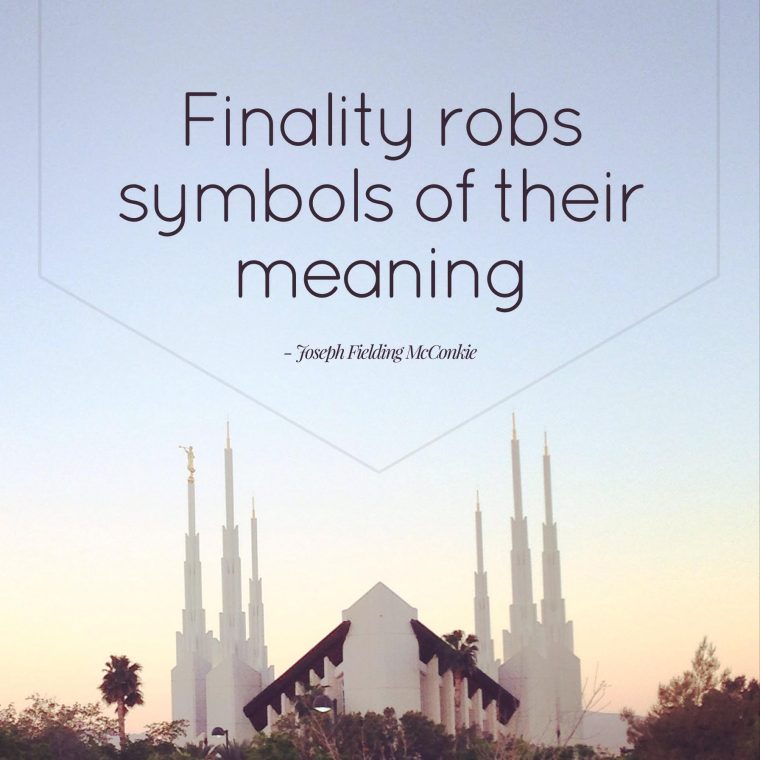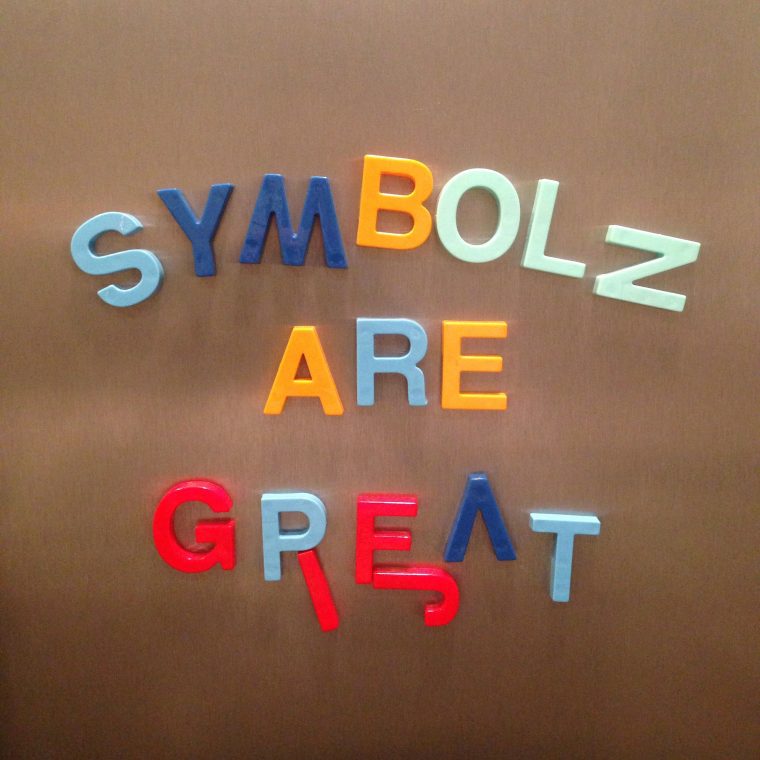This quote brilliantly sums up a critically important key to understanding symbols.
“One explanation of a symbol that has been given does not preclude someone else seeing beyond that. Symbols were intended to expand our freedom of expression and feelings, not limit them. In suggesting some meanings associated with the symbols on the Salt Lake Temple, it need not be supposed that this constitutes the final word on the matter. Finality robs symbols of their meaning.” – Joseph Fielding McConkie, Symbols of Our Faith, 32
A few weeks ago, I was trying to leave my wife a love note on the fridge with some of the magnetic letters that were scattered everywhere. I quickly realized how limited my ability to express myself would be as I only had one of each letter.
Although I did manage to put some kind of crude message together, imagine trying to write a novel or something! Letters of the alphabet are symbols, and while the letters of the English alphabet don’t have meanings in and of themselves like Hebrew letters do, their real ability to communicate shines when they are combined with other letters to make words and sentences.
As you can see by the photo below, having only 26 letters to work with severely limits one’s capacity to communicate.
If we think of symbols like letters of the alphabet that form words and sentences, then we are expanding our capacity to be taught by the Spirit.
One of the things that worried me about creating my Symbol Cards and ldsSymbols.com was inadvertantly establishing some kind of authoritative guide that led people to exclude any meanings that didn’t appear in my resources. I didn’t want people to think that the meanings I shared were the only meanings or that some meanings were “better” or “more correct” than others.
I felt like the projects were worthwhile as long as people understood that they represented a starting point, a place to document certain potential meanings that appear to be consistently used in scripture, culture, mathematics, biology, astronomy, etc. I think I need to do a better job at expressing that because it cannot be stated enough.
What do you think?
- Has symbolism been a tough subject for you to understand?
- Does McConkie’s quote resonate with your experience or help you see things in a new light?
- What other qualities about symbolism do you feel are important to take note of?




7 Comments
I like to think of Elohim as a Father/Mother dyad with El as Father and Shadai/Wisdom/Asherah/Counsel as Mother. The book of Abraham calls Elohim a council of gods, with no definite number. Recent conference talks instruct us to counsel with our spouse. John 17 emphasized the unity of the Godhead, which is very similar to the instruction to cleave unto our spouse and none else. “Let us make man in *Our* image” and “male and female created he them” suggests that Eve needed a prototype just as much as Adam did.
There is no king without a queen. There is no son without a mother. The coronation of every Davidic king mentions the mother’s name.
In a bit of finality, I believe that 1 Nephi 11:11 and D&C 130:22 exclude the possibility of the Holy Ghost being Heavenly Mother, even though the comforter aspect seems quite feminine.
All of this bumps the minimum size of the Godhead to 4.
What about the Godhead? Have you ever pondered deeply if God the Father, Jesus Christ, and the Holy Ghost are symbols for something even greater? A greater order of things as spoken of in D&C 130? In saying this I don’t mean to be blasphemous in the slightest. I believe that God the Father, Jesus Christ, and the Holy Ghost are real, tangible beings. But just like Adam and Eve are symbolic, (even though they too, lived), aren’t the greatest symbols and lessons to be learned in the Godhead itself? These are important questions to ponder. Most members of the Church see the Godhead as little more than the “3 Super Heroes.” We could really do better by indulging in the scriptures, the Lectures on Faith, etc…
As above, so below and vice versa.
How do you mean?
While heaven may seem foreign to earth, all things are based on the same patterns. So like you said, the Godhead isn’t just a collection of superheroes. We still don’t know the identity of the third member. We have a Father, a Son, and a…. Hmm, what is missing? Maybe the answer is as plain and obvious as it seems, maybe it is more nuanced. I have some theories.
I would nuance the statement by saying “Finality robs symbols of their potential.”
Regarding this trap of assumed finality, a friend of mine has said: “The power is in the question.”
It is all too easy to be complacent with one answer or a certain few answers, especially if such are “official.” One’s knowledge and understanding expand the possibilities, not to mention one’s worthiness, willingness, and work to receive personal revelation.
In the gospel and in the Church, there are official answers; however, this does not to imply that there is not more to it–quite the contrary. When a truth or fact is beyond the present grasp of one, it may be within the grasp of another. It is wisdom that what is taught and how it’s taught should be tailored to the capacity of audience, be it an audience of one or many.
If one considers an interpretation or an answer as one piece of the puzzle of the omniscience of God, projected into the familiar 2D form, then, on a given subject, two pieces of this puzzle may either connect, overlap, or be divided by some distance. In this distance are the temptation and pitfalls of interpolation as well as the rewards of faithful searching.
Very good, I agree with your points. I also think “potential” is a more useful word than “meaning.” What I love about the subject of symbols is that it is one of the best ways to introduce this kind of abstract thinking into the minds of people. It puts the mind into the proper framework to be able to explore the mysteries of God.